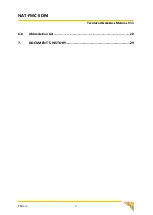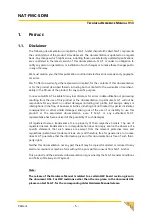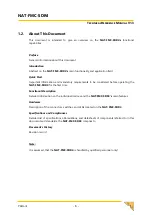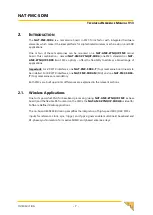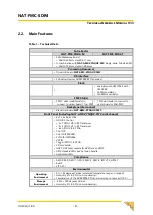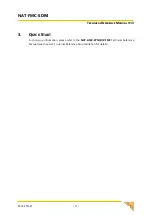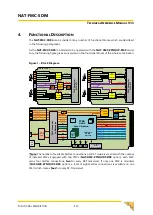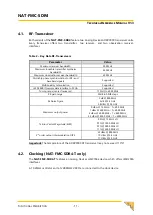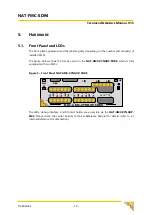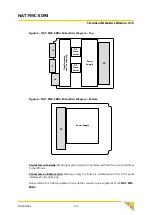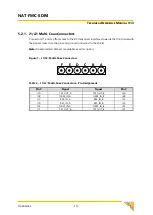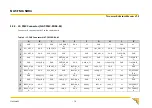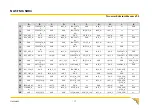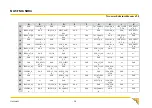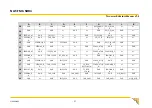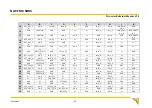
NAT-FMC-SDR4
T
ECHNICAL
R
EFERENCE
M
ANUAL
V1.3
F
UNCTIONAL
D
ESCRIPTION
- 11 -
4.1.
RF-Transceiver
Both variants of the
NAT-FMC-SDR4
feature two Analog Devices ADRV9009 transceiver units.
Every transceiver offers two transmitter-, two receiver-, and two observation receiver-
interfaces.
Table 2
–
Key Data RF-Transceivers
Parameter
Value
Maximum receiver bandwidth
200 MHz
Maximum tuneable transmitter synthesis
bandwidth
450 MHz
Maximum observation receiver bandwidth
450 MHz
Multichip phase synchronization for RF- and
baseband signals
Supported
Multiboard synchronization
Supported
JESD204B IQ sample data interface to FPGA
Supported
Tuning range (center frequency)
75 MHz to 6000 MHz
RX gain range
30dB in 0.5dB steps
Rx Noise Figure
2dB @ 800 MHz
3dB @ 2.4 GHz
3.8 dBm @ 5.5 GHz
Maximum output power
9 dBm @ 75 MHz < f ≤ 600 MHz
7 dBm @ 600
MHz < f ≤ 4000 MHz
6 dBm @ 4000 MHz < f ≤ 4800 MHz
4.5 dBm @ 4800 MHz < f ≤ 6000 MHz
Tx Error Vector Magnitude (EVM)
0.5% @ 75 MHz LO
0.7% @ 1900 MHz LO
0.7% @ 3800 MHz LO
1.1% @ 5900 MHz LO
3
rd
order output intermodulation OIP3
23 dBm @ 800 MHz
19 dBm @ 2.4 GHz
17 dBm @ 5.5 GHz
Important:
The temperature of the ADRV9009 RF transceiver may not exceed 110°C!
4.2.
Clocking (NAT-FMC-SDR4-T only)
The
NAT-FMC-SDR4-T
features an Analog Devices HMC7044 device, which offers JESD204b
interfaces.
A 19.2MHz oscillator and a 122.88MHz VXCO are connected to the clock device.



